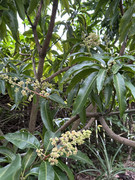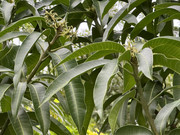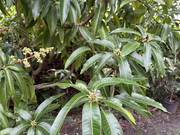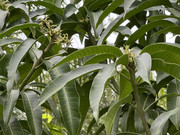Not sure about the soils there. Ours are aluminum heavy but less than yours it seems. Gypsum goes a long way!
I think the deal is the holy grail of no inputs and regeneration of forest. The devil is in the details though. People will say there's no witches broom fungus in syntropic farms and no infestations. This is not true. The one famous case of a commercial syntropic farm I know of with decades of experience is billed as being zero input and the like, but actually they use manure and the like like everyone else, as well as large teams of labor from people who pay to take classes. It does show that you can restore soil by accelerating regeneration and labor alone which is a feat. In terms of commercial farming though labor and selling those products is a massive question.
They cite some studies but I've never found them. In Brazil there's lots of research on SAFs (agroforestry systems) particularly for coffee, cacao, and açaí if you read Portuguese.
Ernest is very into old school life in terms of doing everything manually, oral history etc. He never wrote anything. The followers skew to the philosophical side so that compounds it. It's all very new. We're talking since the 90s only and Ernest cultivates just 5ha these days and never seems to have tried to sustain a commercial operation. A sober view would be that it's just a pocket of the broader agroforestry world which is getting worked out.
Stuff with more years behind it would be the communities in Tome-acu in the amazon which developed cooperatives and systems of agroforestry around acai, cacao, pupunha, cupuaucu, etc. There's others as well of course
You've got some very interesting insights about all that. All those claims sound a lot like permaculture. Permaculture is what inspired me. The founder of permaculture, on the other hand, documented his knowledge a lot better than Ernst. Mostly though permaculture has been co-opted by hippies with a lot of exaggerated claims, and it doesn't seem like there are many commercially successful examples there either. It feels a little cultish, and I also get a sense of that from the youtubers I've seen who are into syntropic agroforestry.
"It does show that you can restore soil by accelerating regeneration and labor alone which is a feat."
That's what interested me in learning more about it. I live in an area where it's not feasible to add a lot of product and mechanizing is probably impossible. I wonder how long it would take to reduce subsoil Al3+ saturation of 80% to a more reasonable level like 40% without the addition of any liming agents. That Al saturation measurement at our place was taken two years after adding 1 ton per hectare of dolomite and weedwacking the area probably a total of 5 times (i.e. cycling the biomass 5 times). If we were able to till in another ton per hectare of dolomite to the subsoil, then it would probably get the levels pretty close to 40%. We are thinking of adding another ton to the top soon, but we have no way of tilling it in, and we probably shouldn't, because it would disturb the trees' roots. My understanding is that it will percolate to the subsoil over time and begin to correct that situation.
There is a liming effect of adding mulches, but it's not well-researched. I assume the weedwacking and leaf fall in our case is at least somewhat equivalent to the addition of mulches to the denuded croplands that were used in studies. I understand the disease-suppressive and nutrient-cycling/mining potential of soil biology as well, so that is why I am a believer in syntropic agroforesty. Just wish there were better resources to explain the justification for all the peculiar things that they do.
















 . Deep roots can capture this nitrate.
. Deep roots can capture this nitrate.